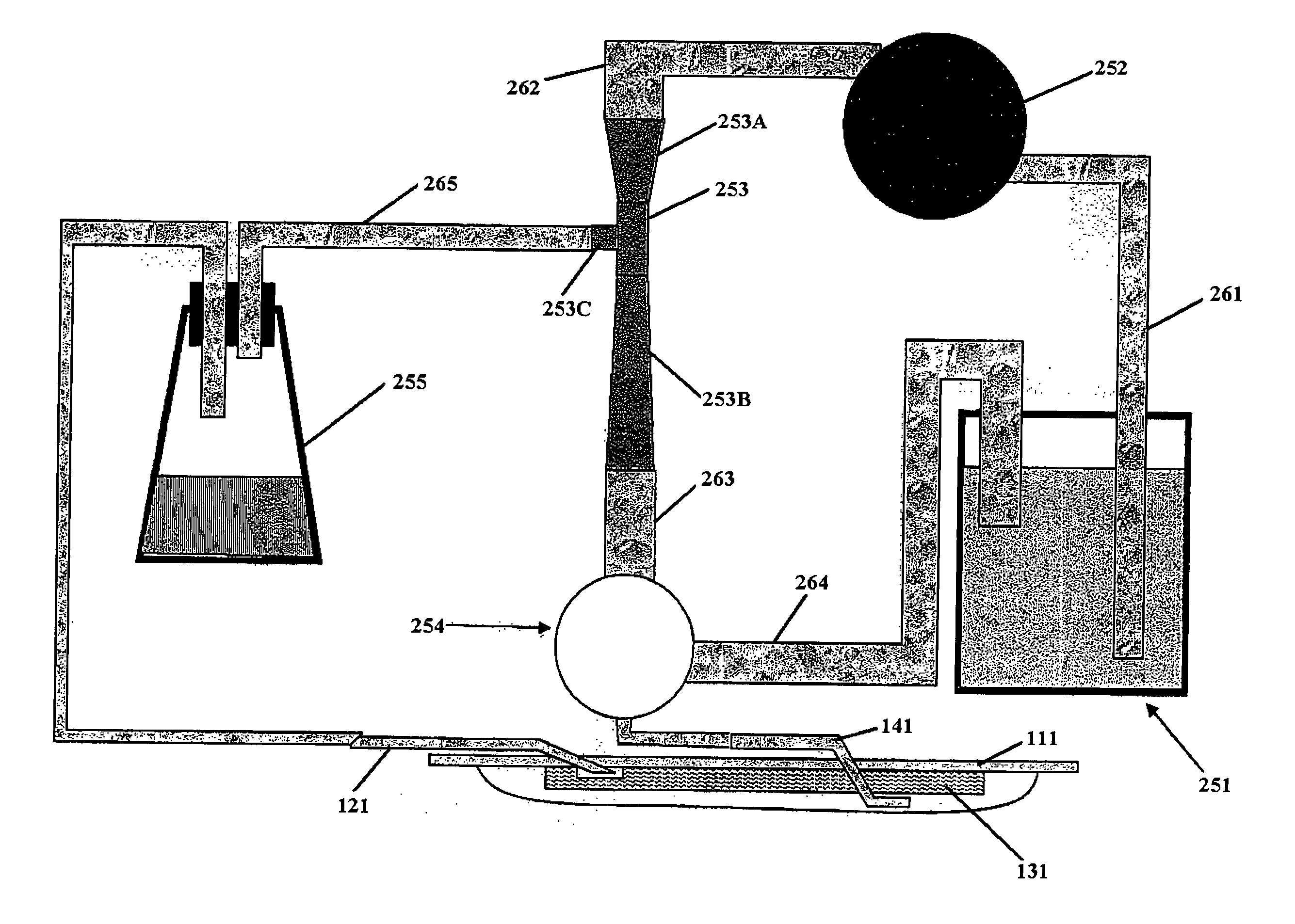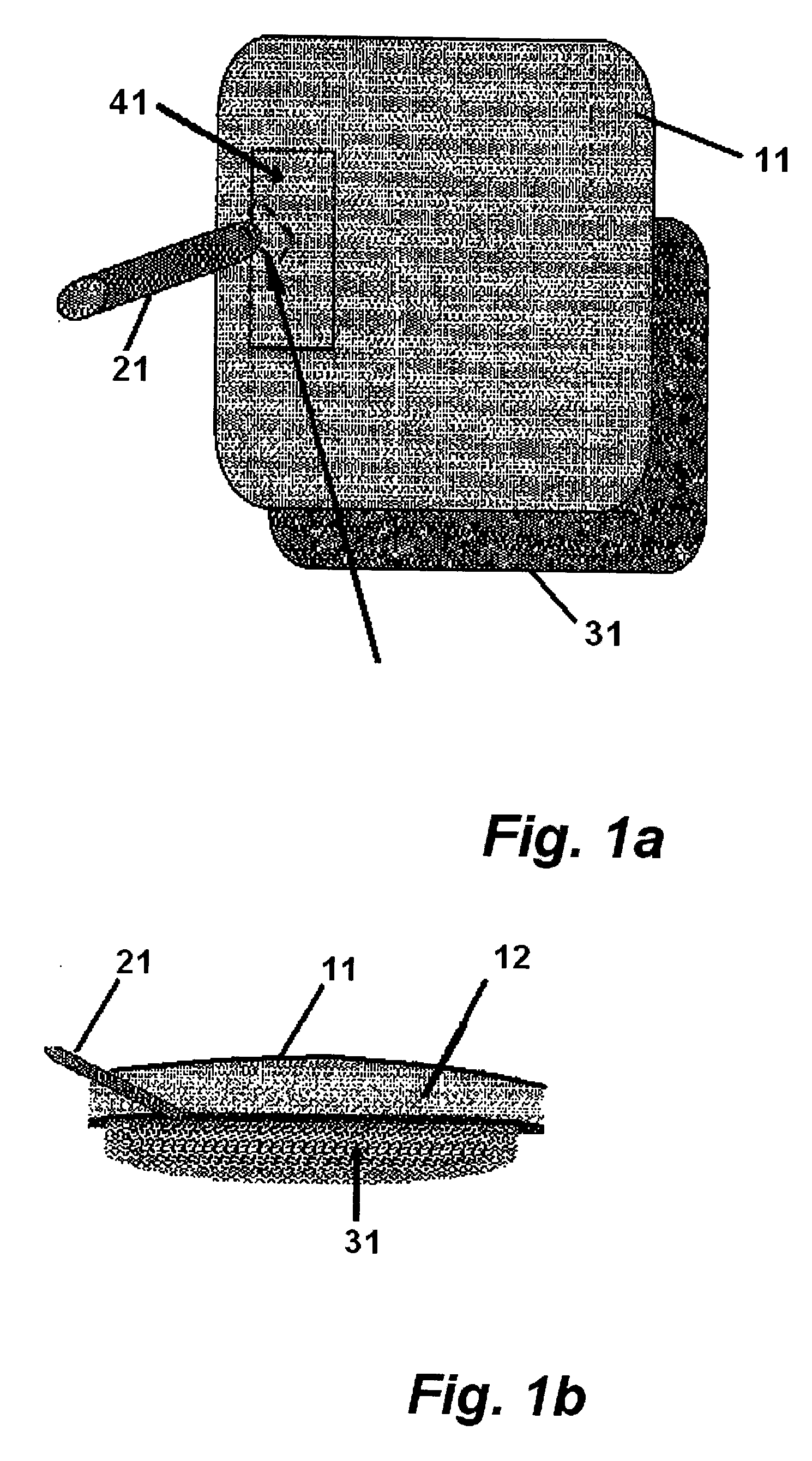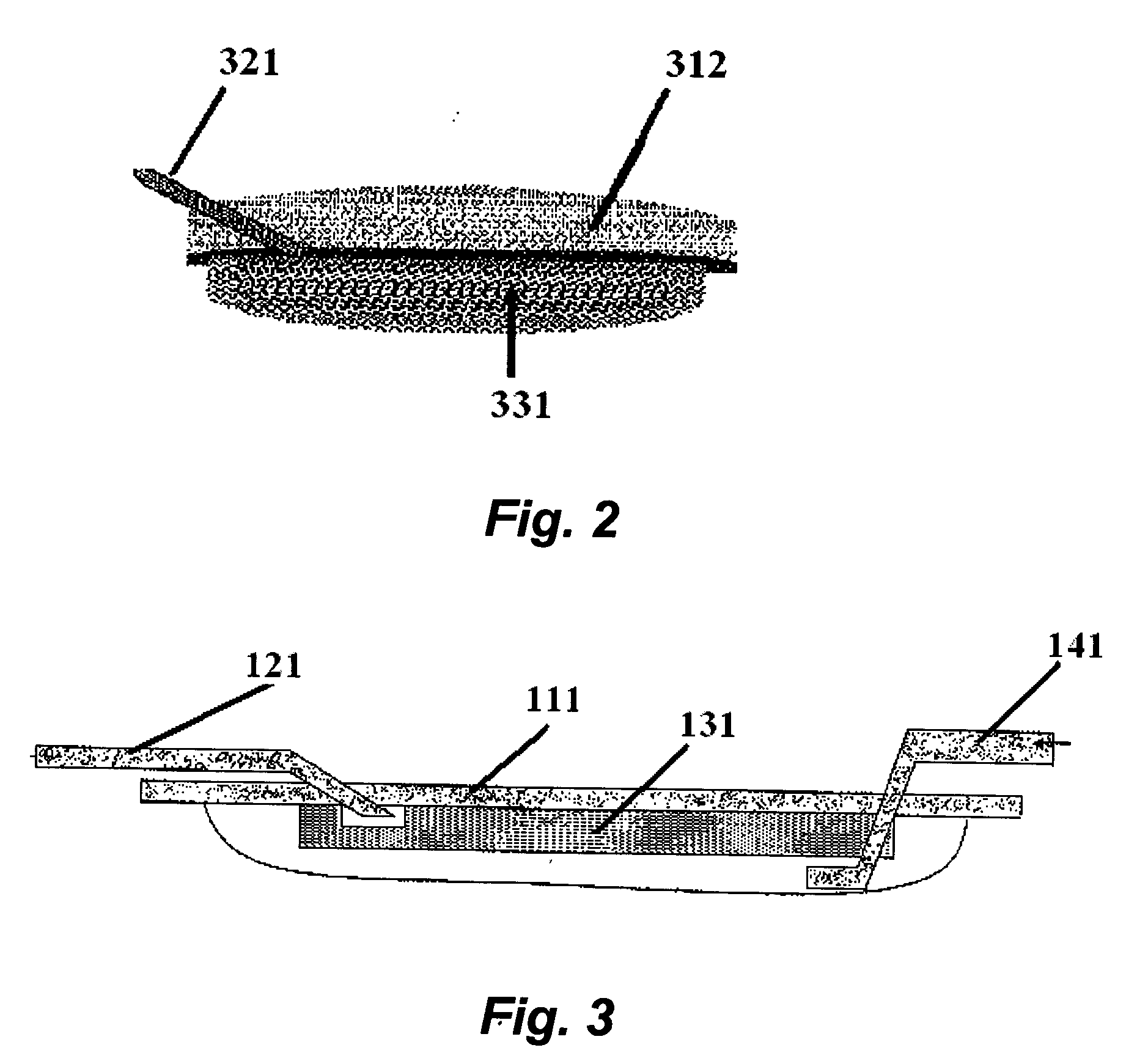Vacuum wound dressing
a wound dressing and vacuum technology, applied in the field of vacuum wound dressing, can solve the problems of not being recognized that such methods can be effectively combined
- Summary
- Abstract
- Description
- Claims
- Application Information
AI Technical Summary
Benefits of technology
Problems solved by technology
Method used
Image
Examples
Embodiment Construction
[0011] The outer dressing used in the vacuum method can include a vacuum sealing outer layer that is film layer 11, and a foam layer 12. As illustrated in FIGS. 1a and 1b, a vacuum source connector 21 (e.g., silicone tubing) can be slotted through film layer 11 and foam layer 12, and sealed with another adhesive film 41. Film 41 can be, for example, the Opsite™ film dressing from Smith & Nephew (Cambridge, United Kingdom). The vacuum permeable foam layer 12 is separated from direct contact with the wound by wound contact layer 31.
[0012] As illustrated, the source of vacuum (illustrated as tubing) is favorably separated from the wound by a wound contact layer, or a portion of a wound contact layer.
[0013] As illustrated in FIG. 2, the outer layer of the vacuum sealing layer can be foam layer 312, with the porosity of the foam layer selected retain a portion of the vacuum at the wound site. Foam layer 312 is separated from direct contact with the wound by wound contact layer 331. Vac...
PUM
 Login to View More
Login to View More Abstract
Description
Claims
Application Information
 Login to View More
Login to View More - R&D
- Intellectual Property
- Life Sciences
- Materials
- Tech Scout
- Unparalleled Data Quality
- Higher Quality Content
- 60% Fewer Hallucinations
Browse by: Latest US Patents, China's latest patents, Technical Efficacy Thesaurus, Application Domain, Technology Topic, Popular Technical Reports.
© 2025 PatSnap. All rights reserved.Legal|Privacy policy|Modern Slavery Act Transparency Statement|Sitemap|About US| Contact US: help@patsnap.com



